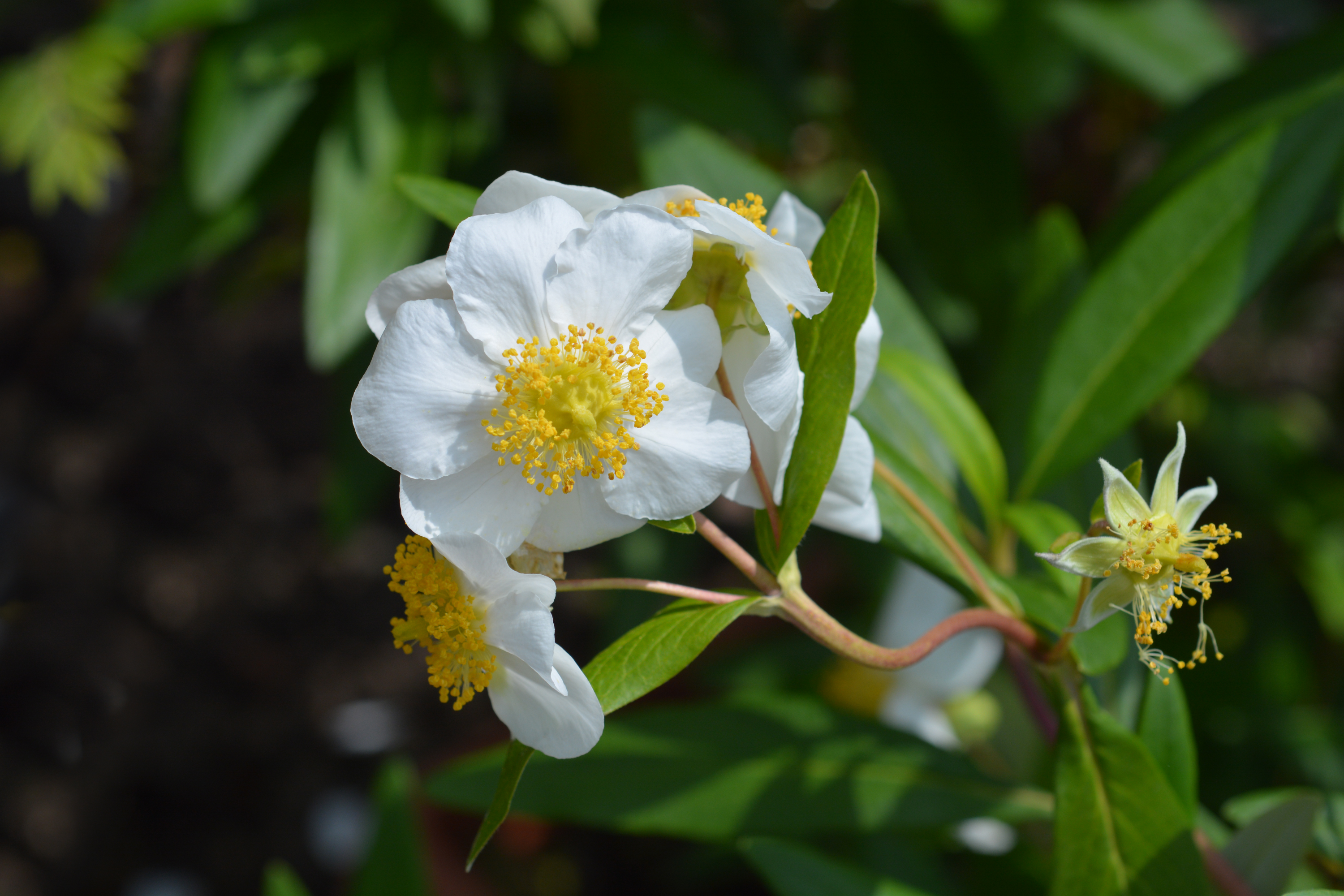Bush anemone
(Carpenteria californica)

Description
Carpenteria californica, the tree anemone or bush anemone, is a species of flowering plant in the hydrangea family Hydrangeaceae. It is the sole species in the monotypic genus Carpenteria, which is closely related to the similar genus Philadelphus. It is a flowering evergreen shrub native to the Sierra Nevada foothills in California. The genus was named in honor of Dr. William Marbury Carpenter, a noted botanist from Louisiana. Note that Carpenteria should not be confused with the similarly spelled Carpentaria, a genus of palms native to northern Australia. Carpenteria californica grows to 1–3 m (3 ft 3 in – 9 ft 10 in) tall, with flaky bark on older stems. The leaves are opposite, lanceolate, 4–10 cm (2–4 in) long and 1–2.5 cm (0.4–1.0 in) broad, glossy green above, blue-green to whitish and downy beneath. The sweetly-scented flowers are 3–7 cm (1–3 in) across with five to eight pure white petals and a cluster of yellow stamens. It flowers from late spring to midsummer. The fruit is a leathery capsule 6–12 mm (1⁄4–1⁄2 in) in diameter, containing numerous seeds. The bush anemone is a rare species, endemic to only seven sites in Fresno and Madera Counties, where it grows in chaparral and oak woodlands at 340–1,340 m (1,115–4,396 ft) altitude, between the San Joaquin River and Kings River. It is well adapted to wildfire, reproducing by stump sprouts after burning. Natural seedlings are rare.
Taxonomic tree:







